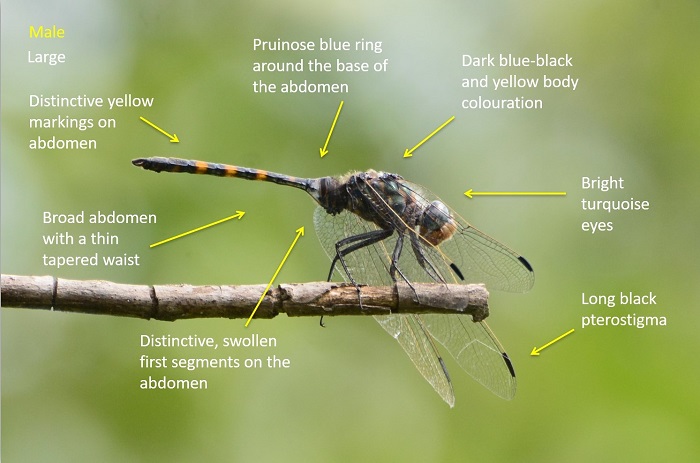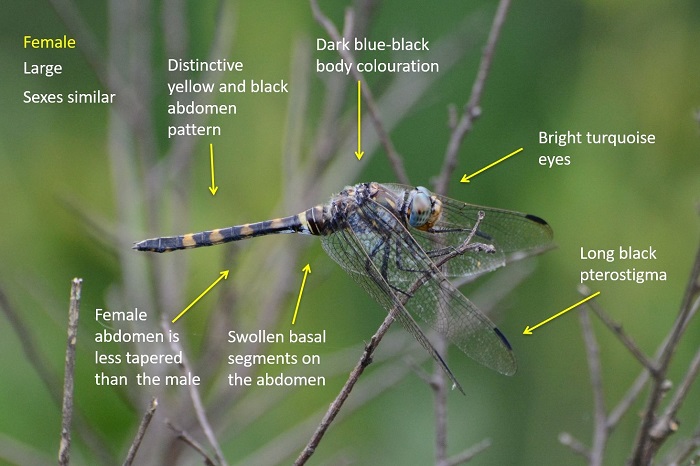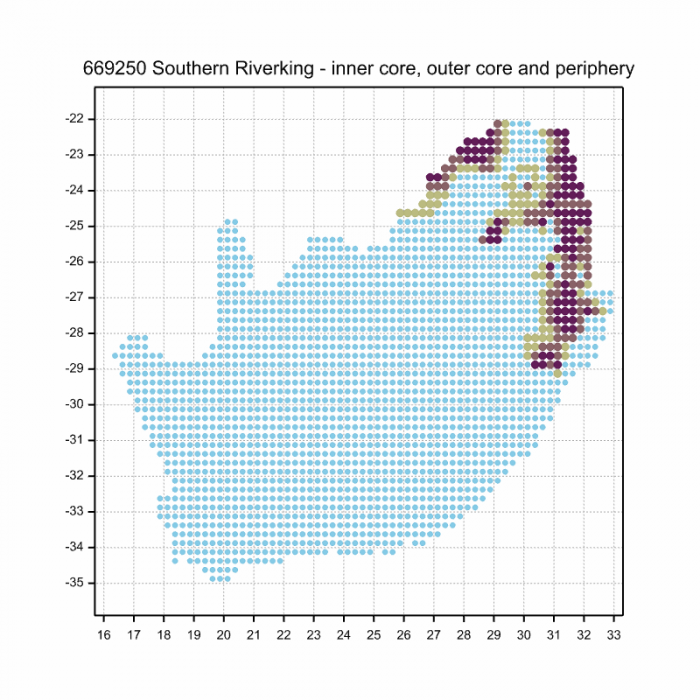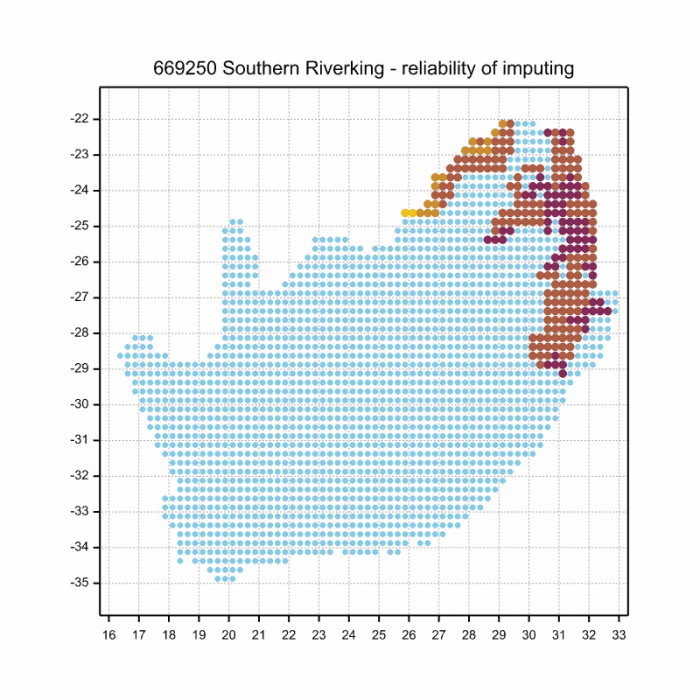View the above photo record (by Gary Brown) in OdonataMAP here.
Find the Ringed Cascader in the FBIS database (Freshwater Biodiversity Information System) here.
Family Libellulidae
Zygonoides fuelleborni – SOUTHERN RIVERKING
(Grünberg, 1902)
Identification
Medium-large to large size.
Length attains 56mm. The wingspan can reach 90mm.
Both sexes are similar in appearance. The most distinguishing feature of this species is the swollen basal segments on the abdomen. This is most noticeable in the male.
Most likely to be mistaken for Olpogastra lugubris (Bottletail) or Zygonyx torridus (Ringed Cascader). Zygonoides fuelleborni and Olpogastra lugubris show similar patterning but are easily told apart by their very different abdomen shapes. Zygonoides fuelleborni has a broad abdomen and a noticeably tapered waist. Olpogastra lugubris has a diagnostic, thin and elongate abdomen. The abdomen of Zygonyx torridus is also broad but lacks the tapered waist. Zygonoides fuelleborni can be further separated from Zygonyx torridus by its bright blue-green eyes as opposed to the black-brown eyes of the latter.
Click here for more details on identification of the Southern Riverking.

Mkuze River, KwaZulu-Natal
Photo by Ryan Tippett

Mkuze River, KwaZulu-Natal
Photo by Ryan Tippett
Habitat
The preferred habitats are large, strong-flowing savanna rivers with wooded or reed-lined banks. They especially like the faster sections of rivers (rapids, falls), often with exposed rocks or overhanging trees that can be used for perching.

Photo by Ryan Tippett
Behaviour
Zygonoides fuelleborni is a busy, active species with a swift, powerful flight. Perches regularly between flights, but seldom for very long. Often perches on overhanging reeds, trees or bushes and frequently sits on rocks close to the water. Frequently joins mixed species hunting swarms at dusk.
Status and Conservation
The Southern Riverking is localised and thinly distributed in South Africa. It occurs primarily in undisturbed habitats, although it is often found near weirs and dams on rivers that create rapid-like conditions. It is listed as of Least Concern in the IUCN Red List of Threatened Species.
Distribution
Zygonoides fuelleborni is found in East and Southern Africa, from Kenya down to central KwaZulu-Natal in South Africa.
Below is a map showing the distribution of records in South Africa for the Southern Riverking. Taken from the OdonataMAP database as at February 2020.

The next map below is an imputed map, produced by an interpolation algorithm, which attempts to generate a full distribution map from the partial information in the map above. This map will be improved by the submission of records to the OdonataMAP section of the Virtual Museum.


Ultimately we will produce a series of maps for all the odonata species in the region. The current algorithm is a new algorithm. The objective is mainly to produce “smoothed” maps that could go into a field guide for odonata. This basic version of the algorithm (as mapped above) does not make use of “explanatory variables” (e.g. altitude, terrain roughness, presence of freshwater — we will be producing maps that take these variables into account soon). Currently, it only makes use of the OdonataMAP records for the species being mapped, as well as all the other records of all other species. The basic maps are “optimistic” and will generally show ranges to be larger than what they probably are.
These maps use the data in the OdonataMAP section of the Virtual Museum, and also the database assembled by the previous JRS funded project, which was led by Professor Michael Samways and Dr KD Dijkstra.
Further Resources
Virtual Museum (OdonataMAP > Search VM > By Scientific or Common Name)
More common names: Krasse Bottelstert (Afrikaans)
Type Locality: Langenburg, Tanzania
Recommended citation format: Loftie Eaton. M; Hofmeyr S; Tippett RM; Underhill L – Southern Riverking Zygonoides fuelleborni. Biodiversity and Development Institute. Available online at http://thebdi.org/2020/02/21/southern-riverking-zygonoides-fuelleborni/

